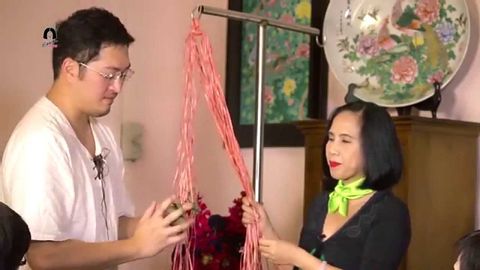The Eeva Show EP 9 :包粽子的人 (The Eeva Show EP 9 :包粽子的人)
kang6688 發佈於 2021 年 01 月 14 日  沒有此條件下的單字
沒有此條件下的單字- n. (c.)圍巾;披肩;(食物)捲
- v.t.包起;纏繞;盤繞;纏繞
- n. (c./u.)邊線;界線;具紋線的;線;線條;字行;電話線;隊;排;(細長的)線
- v.t.沿著...排列
- n. (c./u.) 層 ; 一層;覆蓋層;層 (衣服);地層
- v.t.層
- n. (c.)蛋雞
- prop. n.<名字>
- adj.長的;字數多的
- v.i.嚮往至
- adv.長久地

